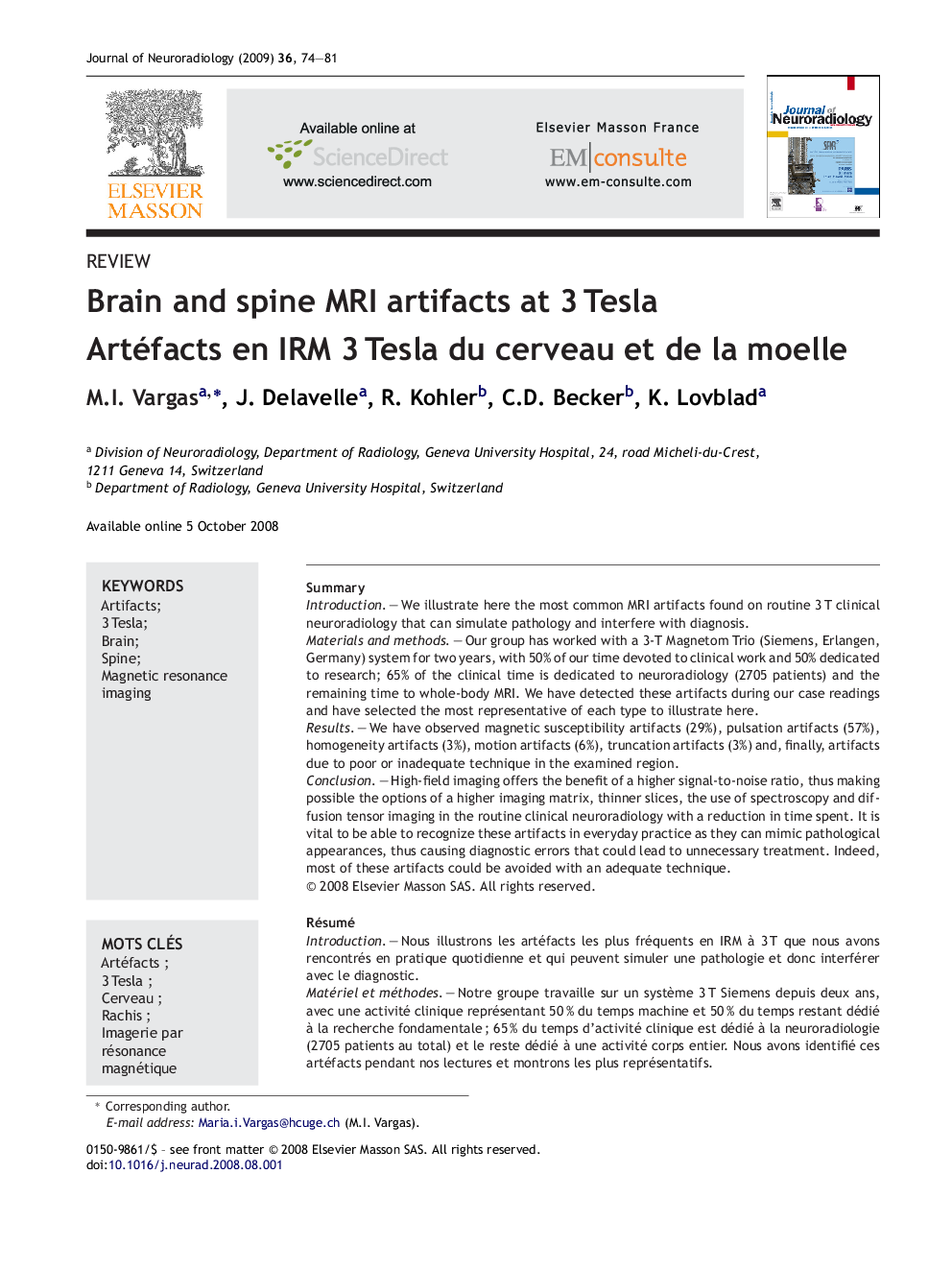| Article ID | Journal | Published Year | Pages | File Type |
|---|---|---|---|---|
| 4234569 | Journal of Neuroradiology | 2009 | 8 Pages |
SummaryIntroductionWe illustrate here the most common MRI artifacts found on routine 3 T clinical neuroradiology that can simulate pathology and interfere with diagnosis.Materials and methodsOur group has worked with a 3-T Magnetom Trio (Siemens, Erlangen, Germany) system for two years, with 50% of our time devoted to clinical work and 50% dedicated to research; 65% of the clinical time is dedicated to neuroradiology (2705 patients) and the remaining time to whole-body MRI. We have detected these artifacts during our case readings and have selected the most representative of each type to illustrate here.ResultsWe have observed magnetic susceptibility artifacts (29%), pulsation artifacts (57%), homogeneity artifacts (3%), motion artifacts (6%), truncation artifacts (3%) and, finally, artifacts due to poor or inadequate technique in the examined region.ConclusionHigh-field imaging offers the benefit of a higher signal-to-noise ratio, thus making possible the options of a higher imaging matrix, thinner slices, the use of spectroscopy and diffusion tensor imaging in the routine clinical neuroradiology with a reduction in time spent. It is vital to be able to recognize these artifacts in everyday practice as they can mimic pathological appearances, thus causing diagnostic errors that could lead to unnecessary treatment. Indeed, most of these artifacts could be avoided with an adequate technique.
RésuméIntroductionNous illustrons les artéfacts les plus fréquents en IRM à 3 T que nous avons rencontrés en pratique quotidienne et qui peuvent simuler une pathologie et donc interférer avec le diagnostic.Matériel et méthodesNotre groupe travaille sur un système 3 T Siemens depuis deux ans, avec une activité clinique représentant 50 % du temps machine et 50 % du temps restant dédié à la recherche fondamentale ; 65 % du temps d’activité clinique est dédié à la neuroradiologie (2705 patients au total) et le reste dédié à une activité corps entier. Nous avons identifié ces artéfacts pendant nos lectures et montrons les plus représentatifs.RésultatsNous illustrons chaque type ainsi que les pathologies qu’ils peuvent simuler. Nous avons observé des artéfacts de susceptibilité magnétique (29 %), artéfacts de pulsation (57 %), artéfacts d’homogénéité (3 %) artéfacts de troncature (3 %), artéfacts de mouvement (6 %) et finalement des artéfacts liés à un mauvais choix de technique d’examen pour la région anatomique explorée.ConclusionL’imagerie à champ élevé offre l’avantage d’un rapport signal sur bruit élevé, rendant ainsi possible l’acquisition avec une matrice plus élevée, des coupes plus fines, ainsi que l’utilisation en routine clinique de la spectroscopie et de l’imagerie du tenseur de diffusion. Pour la pratique quotidienne, il est indispensable d’apprendre à reconnaître ces artéfacts car la plupart peuvent être évités. En plus, ils peuvent simuler une pathologie et ainsi induire des erreurs diagnostiques et en conséquence un traitement inapproprié.
